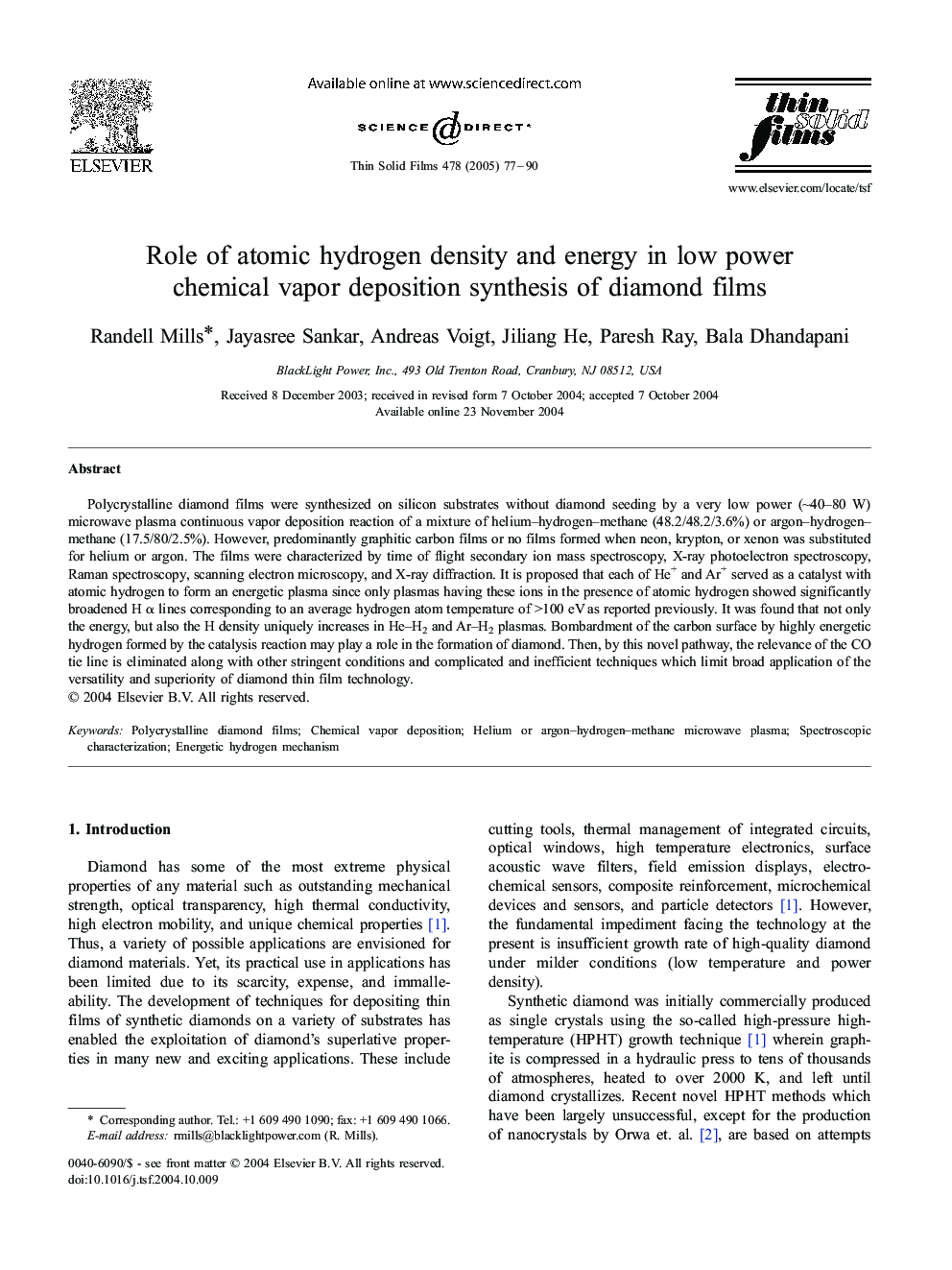| Article ID | Journal | Published Year | Pages | File Type |
|---|---|---|---|---|
| 9812782 | Thin Solid Films | 2005 | 14 Pages |
Abstract
Polycrystalline diamond films were synthesized on silicon substrates without diamond seeding by a very low power (â¼40-80 W) microwave plasma continuous vapor deposition reaction of a mixture of helium-hydrogen-methane (48.2/48.2/3.6%) or argon-hydrogen-methane (17.5/80/2.5%). However, predominantly graphitic carbon films or no films formed when neon, krypton, or xenon was substituted for helium or argon. The films were characterized by time of flight secondary ion mass spectroscopy, X-ray photoelectron spectroscopy, Raman spectroscopy, scanning electron microscopy, and X-ray diffraction. It is proposed that each of He+ and Ar+ served as a catalyst with atomic hydrogen to form an energetic plasma since only plasmas having these ions in the presence of atomic hydrogen showed significantly broadened H α lines corresponding to an average hydrogen atom temperature of >100 eV as reported previously. It was found that not only the energy, but also the H density uniquely increases in He-H2 and Ar-H2 plasmas. Bombardment of the carbon surface by highly energetic hydrogen formed by the catalysis reaction may play a role in the formation of diamond. Then, by this novel pathway, the relevance of the CO tie line is eliminated along with other stringent conditions and complicated and inefficient techniques which limit broad application of the versatility and superiority of diamond thin film technology.
Related Topics
Physical Sciences and Engineering
Materials Science
Nanotechnology
Authors
Randell Mills, Jayasree Sankar, Andreas Voigt, Jiliang He, Paresh Ray, Bala Dhandapani,
